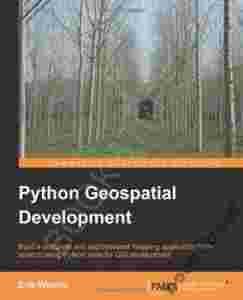|
Open Source GIS (Geographic Information System) is a
growing area with the explosion of applications such as
Google Maps, Google Earth, and GPS. The GIS market is
growing rapidly and as a Python developer you will find
yourself either wanting grounding in GIS or needing to
get up to speed to do your job. In today's
location-aware world, all commercial Python developers
can benefit from an understanding of GIS development
gained using this book. Working with geo-spatial data
can get complicated because you are dealing with
mathematical models of the Earth's surface. Since Python
is a powerful programming language with high-level
toolkits, it is well suited to GIS development. will
familiarize you with the Python tools required for
geo-spatial development such as Mapnik, which is used
for mapping in Python. It introduces GIS at the basic
level with a clear, detailed walkthrough of the key GIS
concepts such as location, distance, units, projections,
datums, and GIS data formats. We then examine a number
of Python libraries and combine these with geo-spatial
data to accomplish a variety of tasks. The book provides
an in-depth look at the concept of storing spatial data
in a database and how you can use spatial databases as
tools to solve a variety of geo-spatial problems. It
goes into the details of generating maps using the
Mapnik map-rendering toolkit, and helps you to build a
sophisticated web-based geo-spatial map-editing
application using GeoDjango, Mapnik, and PostGIS. By the
end of the book, you will be able to integrate spatial
features into your applications and build a complete
mapping application from scratch. A hands-on tutorial
about accessing, manipulating, and displaying
Geo-Spatial data efficiently using a range of Python
tools for GIS development |
|

